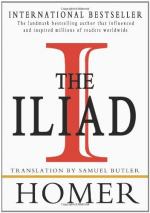|
This section contains 557 words (approx. 2 pages at 400 words per page) |

|
Late Bronze Age (the time of the Trojan War): Burial is by inhumation. The bodies of the dead are laid to rest, often with grave goods and weapons, at least among the upper classes, in dug graves, stone-walled tombs (called "cist graves"), or tholos tombs built in the shape of a beehive, often under a hill.
Iron Age (Homer's own time): The bodies of the dead are cremated and the remains are collected in an urn (often richly decorated), which is then buried in a specially dug pit. In the case of very important burials, a hill (or "tumulus") of earth or stone is raised above the grave, and the spot may further be marked with a column or other grave marker.
Late twentieth century: The majority of burials are inhumation, though growing numbers of people choose cremation.
Late Bronze Age: Writing is known...
|
This section contains 557 words (approx. 2 pages at 400 words per page) |

|




